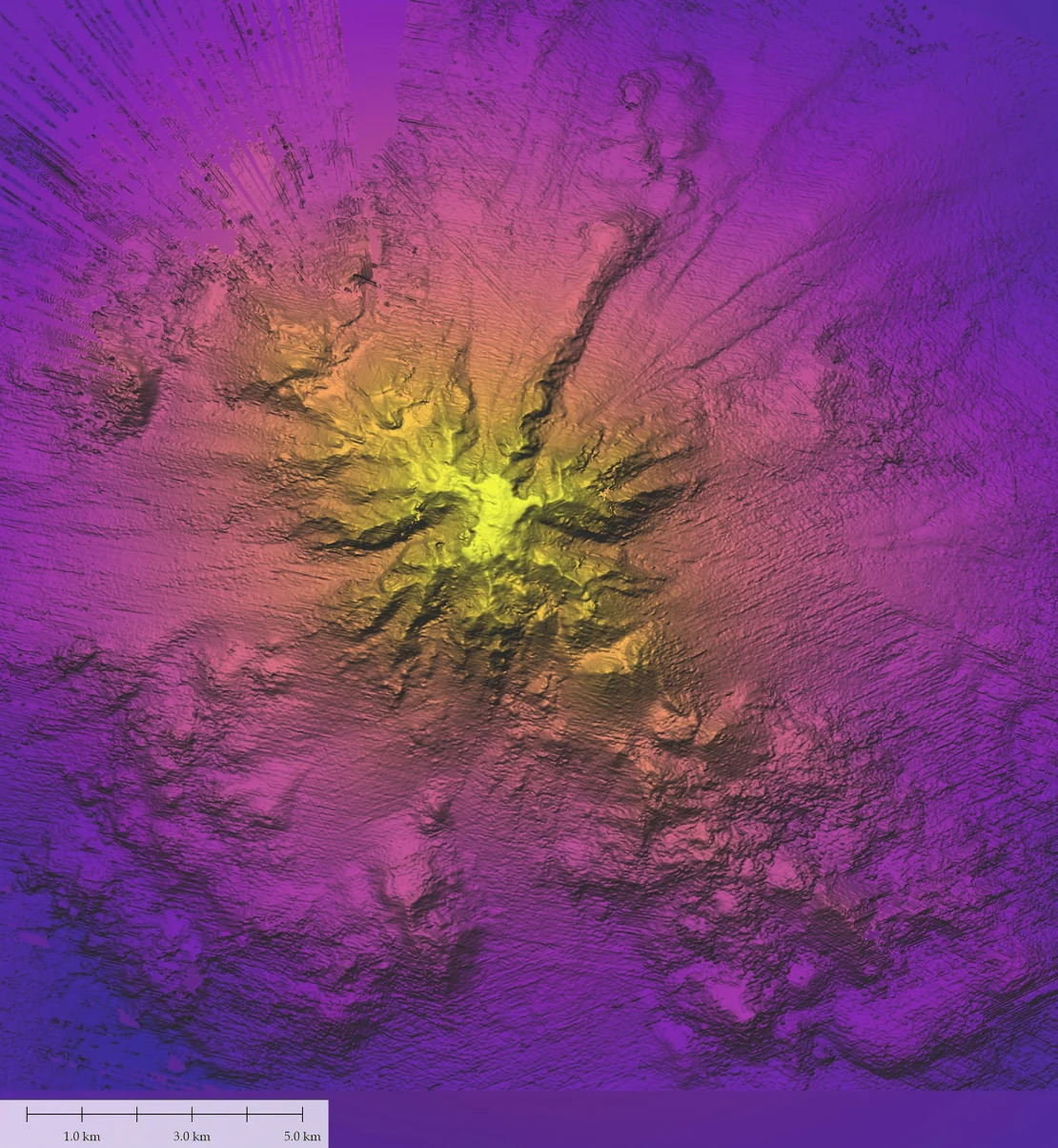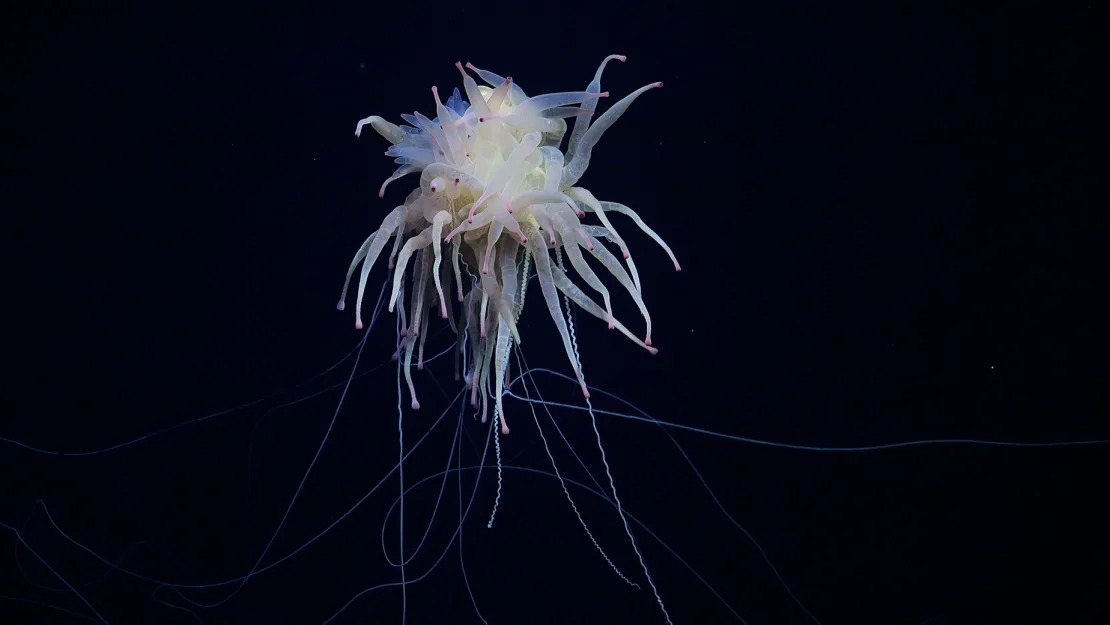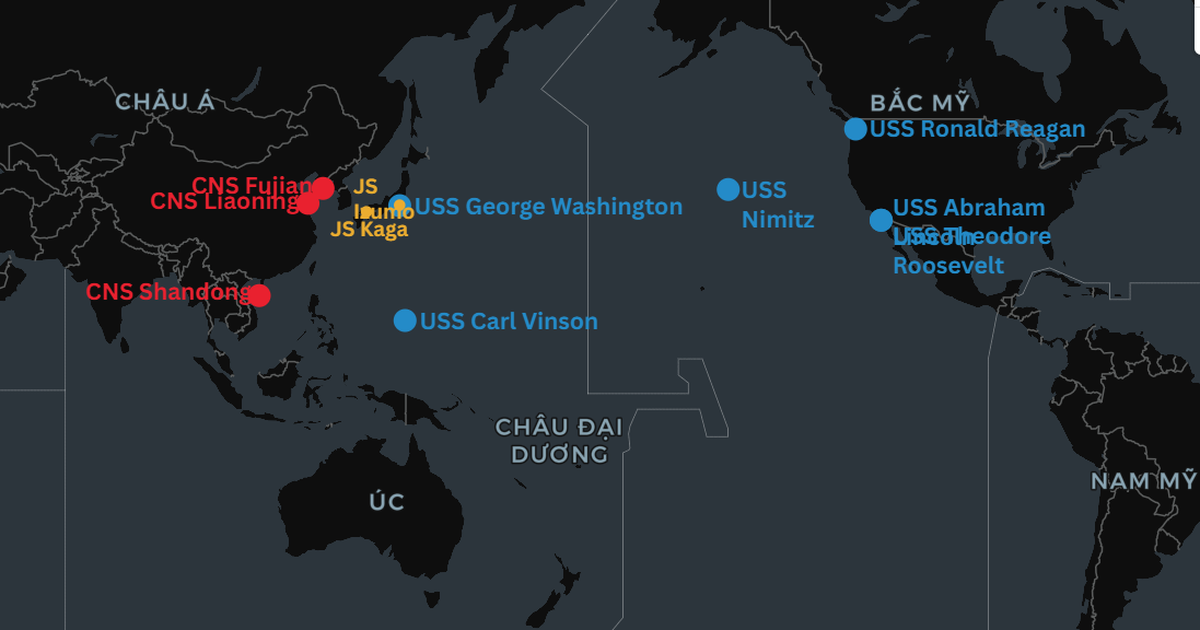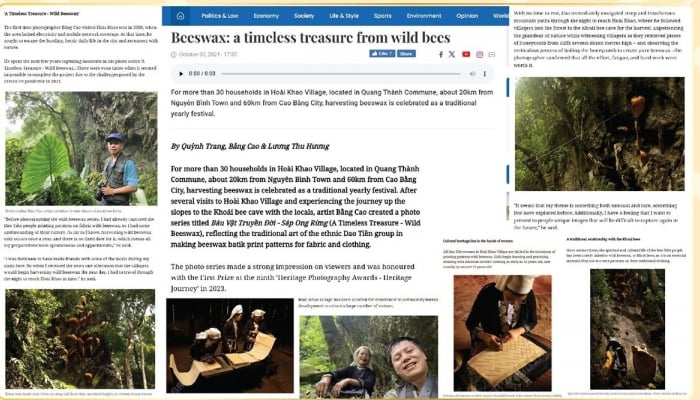A team led by the Schmidt Ocean Institute explored the area in the Pacific Ocean, 900 miles off the coast of Chile, using the research vessel R/V Falkor during a 28-day expedition that ended in August. Researchers mapped the mountain using a sonar system under the ship's hull.

This seamount covers an area of about 70 square kilometers. Photo: Schmidt Ocean Institute
At 3,109 metres (10,000 feet), the newly mapped seamount is larger than Mount Olympus in Greece (2,917 metres) and smaller than Mount Fuji in Japan (3,776 metres). Oceanographers estimate that there are at least 100,000 seamounts taller than 1,000 metres (3,200 feet) around the world. They provide important habitat for many species.
Using an underwater robot, the team explored one of the mountain ranges and found an area with rich marine biodiversity.

An expedition led by the Schmidt Ocean Institute has observed a rare octopus species informally named the Casper's octopus in the South Pacific for the first time. Photo: Schmidt Ocean Institute
Researchers have documented a ghostly white Casper octopus, marking the first time this deep-dwelling cephalopod has been seen in the South Pacific. They have also discovered two rare species of Bathyphysa siphonophores, also known as the “flying spaghetti monster” because of its spaghetti-like shape.
"Casper octopuses have never been caught, so they don't have a scientific name yet," said Jyotika Virmani, executive director of the Schmidt Ocean Institute.
The team also captured the first footage of a living Promachoteuthis squid, known only from a few collected specimens.

Bathyphysa conifera, commonly known as the flying spaghetti monster, was recorded while the team was surveying the seamount along the Nazca seamounts off the coast of Chile. Photo: Schmidt Ocean Institute
The discoveries were the highlight of the research vessel’s third expedition this year to the Nazca Ridge, which could become the world’s first marine protected area under a new United Nations treaty to be adopted in 2023 and is being ratified by nations, Virmani said.
“Over the three expeditions we mapped and explored 25 seamounts, which is quite a large number,” she said. “I think we have some good data that we can present to demonstrate that this is a really interesting area to protect.”
Two previous expeditions in January and February catalogued 150 previously unknown species. An additional 20 potential new species were collected on the most recent expedition.
Details of the newly discovered species will be shared with the Ocean Census, an ambitious international collaboration to document the marine life lurking in the world’s oceans. The project aims to identify 100,000 previously unknown species over the next 10 years, allowing scientists to better understand and protect deep-sea ecosystems.
Hoai Phuong (according to CNN)
Source: https://www.congluan.vn/phat-hien-bach-tuoc-ma-va-quai-vat-spaghetti-o-ngon-nui-ngam-khong-lo-duoi-dai-duong-post310342.html


![[Photo] Ho Chi Minh City speeds up sidewalk repair work before April 30 holiday](https://vstatic.vietnam.vn/vietnam/resource/IMAGE/2025/4/3/17f78833a36f4ba5a9bae215703da710)
![[Photo] A brief moment of rest for the rescue force of the Vietnam People's Army](https://vstatic.vietnam.vn/vietnam/resource/IMAGE/2025/4/3/a2c91fa05dc04293a4b64cfd27ed4dbe)
![[Photo] Prime Minister Pham Minh Chinh chairs meeting after US announces reciprocal tariffs](https://vstatic.vietnam.vn/vietnam/resource/IMAGE/2025/4/3/ee90a2786c0a45d7868de039cef4a712)
![[Photo] Prime Minister Pham Minh Chinh chairs the first meeting of the Steering Committee on Regional and International Financial Centers](https://vstatic.vietnam.vn/vietnam/resource/IMAGE/2025/4/3/47dc687989d4479d95a1dce4466edd32)

![[Photo] General Secretary To Lam receives Japanese Ambassador to Vietnam Ito Naoki](https://vstatic.vietnam.vn/vietnam/resource/IMAGE/2025/4/3/3a5d233bc09d4928ac9bfed97674be98)

























































































Comment (0)